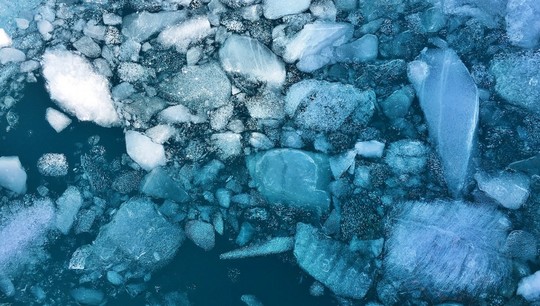Ural Federal University Experts Discover What Influences Seawater Freezing Rates
Seawater freezes faster in the presence of wind and underwater currents at temperatures below zero. This was found out by experts from the Laboratories of Multiscale Mathematical Modeling, and Climate and Environmental Physics of the Ural Federal University. They created a mathematical model and calculated the conditions of seawater freezing. The description of the model and its conclusions were published in the European Physical Journal.
“It turns out that at temperatures around zero and below, even a slight breeze affects the rate of ice formation. The fact is that the wind, just like the underwater current, causes fluctuations (jumps) in temperature, and this in turn leads to faster formation of ice crystals. In other words, with wind or underwater currents, ice freezes faster, the ice layer becomes thicker. Yes, it is looser, not as dense, but the rate of formation increases,” explains study co-author Evgeniya Makoveeva, Lead Researcher at the Laboratory of Multi-Scale Mathematical Modeling of the Ural Federal University.
This happens at any temperature suitable for crystallization, the scientist adds. The effect of temperature is amplified by external noises – wind and underwater currents – that “bring” different temperatures.
“On the one hand, the weather has become more severe, unpredictable or something. The situation is complicated with both winds and currents. We can say that this leads to an increase in ice. But on the other hand, it would be wrong to say that the glaciers will start to recover because of the increased winds and underwater currents. First, external forcing is only one part of a complex process. And second, the atmospheric temperature must be below zero for the water to freeze,” says Evgeniya Makoveeva.
Nevertheless, the research data obtained by the scientists will help to predict changes in the glaciers of the world’s oceans, which is extremely important in a global warming climate.
In the next stage of mathematical modeling, the physicists plan to calculate how the “false bottom” of glaciers is formed. This is another process of sea ice formation in which ice freezes from the bottom up. Up to 50 per cent of the ice may grow in this way.
“False bottom is formed due to density inversion. It occurs in spring and summer when the ice loosens, meltwater seeps through the ice into the space under the ice, and a layer of fresh water is formed. And underneath that is a layer of salt water. And in the place where the layers meet, crystals are born, an ice crust is formed”, – explains Evgeniya Makoveeva.
Note that the study was carried out with the financial support of the Ministry of Education and Science of the Russian Federation in the framework of the project “Science and Universities” (FEUZ-2021-0014).

